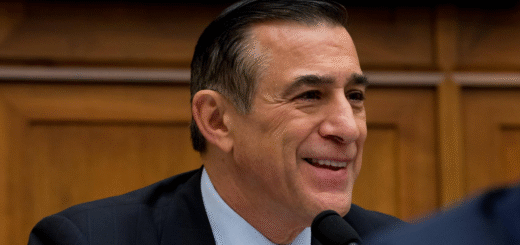America’s High-Stakes Bet On Zangezur: How A U.S.-Led Corridor Could Slash Europe’s Energy Costs And Counter Russia

By Guney Yildiz
Forbes
In a world scrambling for non-Russian energy amid escalating global tensions, could a 43-km strip of Armenian land become America’s masterstroke against Moscow and Tehran? The US’s bold bid to lease the Zangezur Corridor for a century promises $50-100 billion in annual trade flows—but risks igniting a new Cold War flashpoint in the Caucasus.
The United States has thrust itself into the center of a high-stakes diplomatic gamble that could fundamentally alter energy flows across Eurasia. Through its ambitious proposal for the Zangezur Corridor—a strategic 43-kilometer passage through Armenia’s Syunik province—Washington aims to break decades-old deadlocks, diversify Europe’s energy supplies away from Russia, and counter the growing influence of Moscow, Beijing, and Tehran in a critical transit region.
The initiative reflects America’s broader ambition to exploit a rare power vacuum in the South Caucasus, a region historically dominated by Russia but now ripe for realignment following Moscow’s stark failure to protect its ally Armenia during Azerbaijan’s decisive September 2023 offensive in Nagorno-Karabakh.
Strategic Realignment in the Caucasus
Russia’s credibility as a security guarantor in the South Caucasus lies in ruins. Despite the presence of Russian peacekeepers established under the November 2020 ceasefire agreement, Moscow failed to intervene when Azerbaijan retook control of Nagorno-Karabakh, displacing 100,000 ethnic Armenians. This inaction was perceived in Yerevan as a profound betrayal, shattering faith in Russian security guarantees and catalyzing Armenia’s historic pivot westward.

ANADOLU VIA GETTY IMAGES
The strategic consequences have been swift and dramatic. Armenia’s parliament passed EU accession legislation in April 2025, while a US strategic charter with Armenia formalized the growing partnership. As former US Undersecretary of State James O’Brien noted , “The future built around the axis of Russia and Iran as the main players in regional security is unstable and undesirable, including for the governments of Armenia and Azerbaijan.”
This Western alignment creates an unprecedented opening for US influence. Russian imports to the region, which supplied 20-30 percent of regional trade pre-2022, now face sanctions constraints. Meanwhile, US Senior Advisor for Caucasus Negotiations Louis Bono has advanced proposals for international oversight of the corridor, drawing on precedents like the Panama Canal and Cold War Berlin corridors.
The Economic Prize
The potential economic rewards are vast enough to override political and security concerns. World Bank modeling suggests the corridor could unlock $50-100 billion in annual trade value by 2027. This surge would be driven by dramatic logistical improvements—Bloomberg data from May 2025 indicates the route could cut Europe-Asia transit times by 12-15 days compared to existing routes.
The return on investment appears compelling. The Caspian Policy Center estimates infrastructure costs of $3-5 billion over 5-10 years, while Oxford Economics models project $20-30 billion in annual logistics savings. For Azerbaijan, the Center for Economic Reforms Analysis and Communication projects the corridor would increase total exports by over $700 million and boost non-oil GDP by 2 percent annually.
Energy flows underscore the urgency. Azerbaijan’s Southern Gas Corridor delivered 12 billion cubic meters to Europe in 2023, targeting 20 billion by 2027 under a 2022 EU memorandum. Kazakhstan plans to transit increasing oil volumes through Azerbaijan, with actual flows reaching 1.2 million tons between January and October 2024, despite technical challenges limiting capacity.
For European energy security, the implications are profound. The IEA’s 2025 World Energy Outlook projects Europe needs 20 billion cubic meters more non-Russian gas by 2030. Normalized Armenia-Turkey borders could enhance access to Caspian reserves, potentially cutting import costs by 10-15 percent for firms like BP.
The Diplomatic Innovation
The core challenge lies in irreconcilable positions: Azerbaijan demands an unimpeded corridor as dividends from its 2023 military victory, while Armenia adamantly refuses to cede sovereignty over what it views as critical territory. The US “lease” proposal represents a creative attempt to use corporate-legal frameworks to circumvent this deadlock, offering Baku security guarantees while allowing Yerevan to maintain nominal sovereignty.
This approach draws inspiration from historical precedents where creative governance arrangements solved seemingly intractable disputes. Like the Panama Canal under US administration from 1914-1999, the model promises to facilitate global trade while addressing security concerns. Yet critics warn of potential neo-colonial overtones and the risk of long-term backlash.
The March 2025 peace agreement drafts marked significant progress, finalizing terms on mutual territorial recognition, border delimitation, and non-use of force. However, they stalled on transport guarantees and enclave access—precisely where the US proposal seeks to break through.
Geopolitical Calculations and Rival Responses
The corridor’s success would fundamentally alter regional power dynamics, explaining why rival powers are recalibrating their strategies. Iran faces the prospect of losing 20-30 percent of its transit role, disrupting critical trade lifelines including the 43,000 Turkish trucks that pass annually to Central Asia. Russia confronts potential revenue losses of $10-20 billion over a decade and a 10-15 percent erosion of its leverage over European energy markets.
Strategic Takeaway: The Zangezur Corridor represents a defining test of US capacity to engineer win-win solutions in contested regions.
China, meanwhile, eyes $20-30 billion in Belt and Road efficiencies by 2030 through improved connectivity. Yet Beijing must balance these gains against the risk of reduced dependence on Chinese-controlled routes. The corridor could position Turkey as a critical energy hub with direct access to Turkic states, potentially capturing $10-15 billion in annual transit revenues by 2030.
Energy majors are positioning for opportunity. SOCAR expands pipeline capacity while ADNOC explores hydrogen joint ventures. BP and Chevron project $5-10 billion in upstream investment boosts from expanded export capacity. However, political stalemates could inflate project costs by 20 percent, while regulatory delays might push timelines beyond viable investment windows.





